|
| |
Back to Light
Transports
|
Argentina |
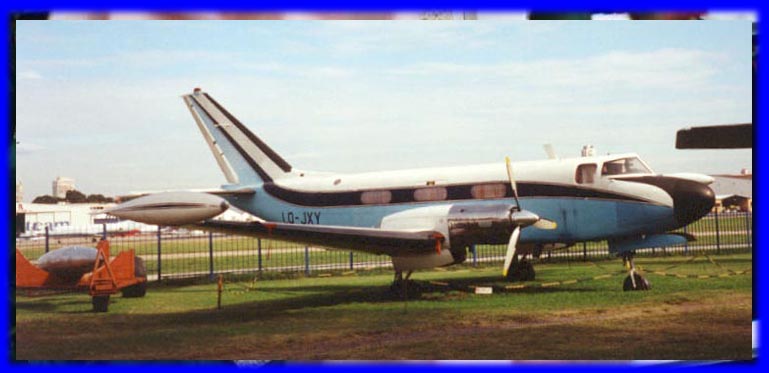 |
|
The FMA IA50 Guarani was a light transport
developed by the Argentine state aircraft company, Fabrica Militar
de Aviones (which immediately tells you its intended customer!). It
seats 15, is powered by two French Turbomeca Bastan turboprops, and
can cruise at 280mph for a range of 1,240 miles. Despite this decent
performance it did not sell outside South America so relatively few
were built. This one was at Buenos Aires
in 1999. |
|
Australia |
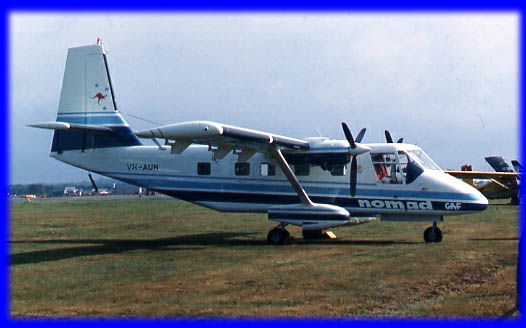 |
|
The GAF (Government Aircraft Factory) Nomad
is Australia's answer to the Twin Otter. It first flew in 1971. With
two Allison turboprop engines, seating for 19 people, a speed of
170mph and range of 980 miles, it is definitely a utilitarian
aircraft. It is used for operation into remote, unprepared
airstrips. Several are in use by air forces for special mission
work. This one was at Farnborough in
September 1976.
|
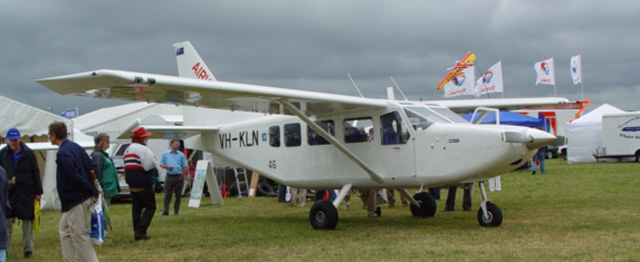 |
The Gippsland Airvan is a rugged eight seat
utility aircraft being produced in Australia and aimed at the market
for replacement of old DHC Beavers and Cessna Skywagons. Its 300hp
Lycoming IO-540 engine gives it a cruising speed of 140mph and range
of 750 miles, though the range is limited when fully loaded. It
first flew in March 1995. It is 28 feet 10 inches long, with a wing
span of 40 feet 7 inches.
Photograph by Ivy at Kemble in July 2005. |
|
Brazil |
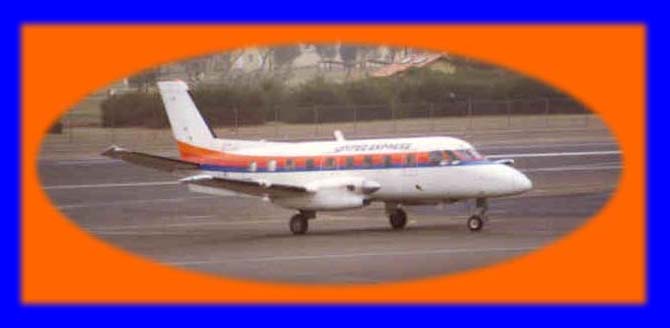 |
|
The Embraer EMB110 Bandeirante (Pioneer) was the
first aircraft to be designed by the Brazilian company. It first
flew in October 1968. It is a simple, reliable light feederliner
with seating for up to 14 people, powered by two Pratt & Whitney
PT6A turboprop engines. It is popular with operators of thin feeder
routes, like the Swearingen Metro with which it competes. Over 500
have been built. This one, operated by
United Express, was pictured in the distance at San Diego in 1988. |
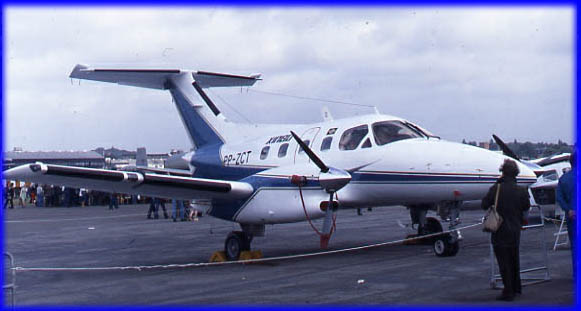 |
The Embraer EMB121 Xingu first flew in
October 1976. Its two PT6A turboprops give it a cruising speed of
240mph over 1,460 miles. It seats up to nine people plus two crew,
putting it in a similar class to the Beech Kingair. It is popular
with light feeder airlines and, for some reason, with air forces as
a VIP transport. This early
demonstration aircraft was at Farnborough in September 1978. |
|
Canada |
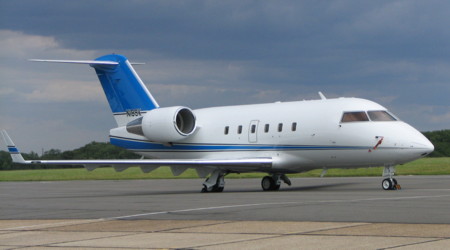 |
|
The Canadair Challenger is a spacious, long
range executive jet, designed to compete with the American
Gulfstream range. It was built in Canada from the 1980s. The company
is now part of the Bombardier group. They are used worldwide.
This Challenger was demonstrating the type to
prospective customers at Farnborough in September 1984. |
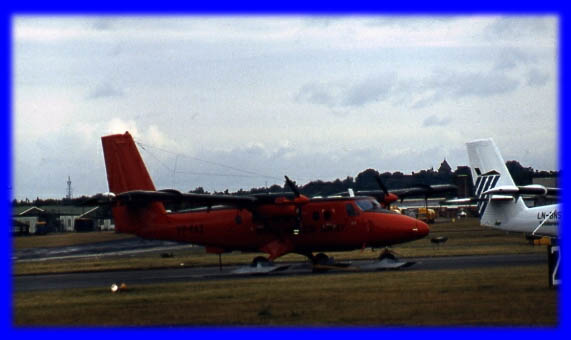 |
De Havilland Canada developed the DHC6 Twin Otter
to complete its range of short take-off and landing aircraft
suitable for operation from remote or rugged strips with poor, or
no, infrastructure. It first flew in May 1965. It has two Pratt &
Whitney turboprops and can carry up to 20 passengers. It is a
favourite with exploration teams who have to get to remote places
such as the Antarctic. Several hundred have been built.
This one, belonging to the British Antarctic
Survey team, was at Farnborough in September 1984. |
|
Czechoslovakia |
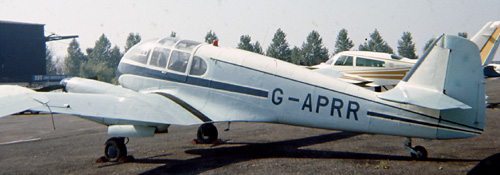 |
 |
|
The Aero 145 was a Czech light aircraft,
first flown in July 1947. Powered by two Czech Walter Minor inline
engines, it could carry 5 people at 150mph over 1,000 miles. Over
700 were built, including several of the initial Aero 45.
Top: Aero 45 at Elstree, August 1975. Bottom:
Aero 145 at Elstree in October 1982. |
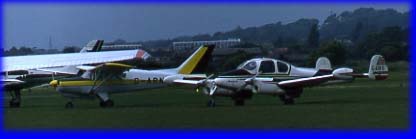 |
The Let L200 Morava was a Czech design
intended to replace the Aero 145. It is a five seat piston-engined
twin, powered by M337 inline engines. It first flew in April 1957.
More than 1,000 were built, mainly for operation in the former
Soviet block. The design was marketed by the then state marketing
company, Omnipol, which is often confusingly described as the
manufacturer. This rather poor picture
was the nearest I could get to a Morava at Shoreham in July 1984. |
|
|
The Let L410 is a very cheap, simple and
reliable commuter airliner built at Kunovice in the former
Czechoslovakia. It was developed from the 1960s L-40. The first
L-410 flew in April 1969. Its only real drawback is range: it can
take 19 passengers for 850 miles at 230mph. A more capable version,
the L-610, is also produced. Top picture,
with an L-610 just visible behind it, was taken at Farnborough in 1998.
Bottom picture: Ukrainian registered L-410 taking off from Headcorn
in June 2006, to drop parachutists. |
| France |
 |
|
The Aerospatiale Corvette was
born into the nascent executive jet market in the early 1970s. It
first flew in December 1972. Its two 2,500lb Pratt & Whitney Canada
JT15 turbofans give it a 350mph cruising speed and range of 1,600
miles. It can take up to 14 people plus two crew, depending on
configuration. It was not successful; only 40 were built. It is 45
feet 5 inches long, with a wing span of 42 feet 3 inches. Gross
weight is 14,500lb. These two had been
converted to light freighters for Touraine Air Transport. |
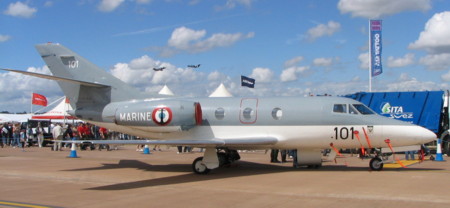 |
The Dassault Falcon 10 was a
smaller version of the Falcon 20 (below), introduced in December
1970. It is smaller (44'11" long, wing span 43') and lighter
(18,300lb gross weight), powered by two Garrett AiResearch TFE-731
engines, which give it a cruising speed of 570mph and range of 2,000
miles with seven passengers.
This one is operated by the French Navy (Aeronavale),
and was at Fairford, July 2007. |
|
|
The Dassault Falcon 20 was the
French competitor to Britain's HS125, and was similarly successful.
It flew in May 1963, nine months after the 125. Its performance is
similar: up to 14 people can be carried at 530mph over 2,000 miles.
It was originally called the Mystere 20, to emphasise its
relationship to the classic Dassault fighter, but the name was
changed to Falcon to suit the American market. It is 56'3" long and
has a wing span of 53'6" and is powered by two GE CF700 engines. It has been used worldwide, perhaps most
famously as the start-up fleet of the biggest start-up company in
corporate history: Federal Express.
This French example visited Newcastle on a
wet, dreary day in March 1976. |
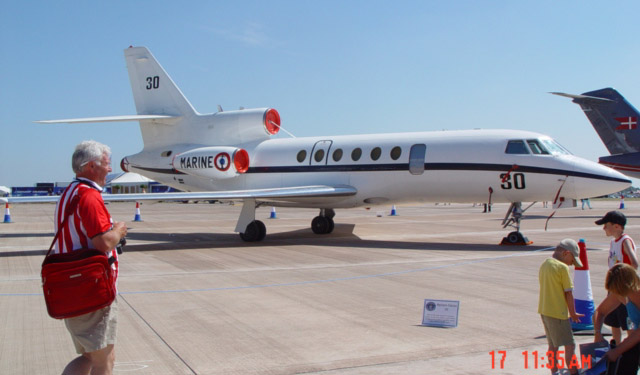 |
The Dassault Falcon 50 is a long
range executive jet, developed from the Falcon 20. It is unusual for
an executive jet in having three engines, 3,700lb Allied Signal
TFE731s, which give it a 500mph cruising speed and range of 3,750
miles. It first flew in November 1976. 275 have been built so far;
it is still in production. It seats 12, plus 2 crew. It is therefore
quite a big machine, 60 feet 9 inches long, with a wing span of 61
feet 11 inches. Gross weight is 39,700lb.
This one, operated by the French navy, was at
Fairford in July 2005. |
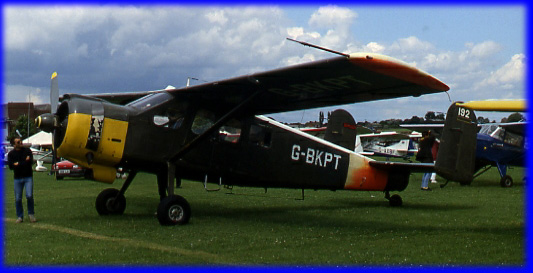 |
The Max Holste Broussard was one of a clutch
of imaginative French designs to emerge during the 1950s. Its single
radial engine, high wing and twin tail make it very distinctive. It
served principally with the French air force as a liaison and
communication aircraft. Many have since been converted to civil use.
This one was at Cranfield in July 1988. |
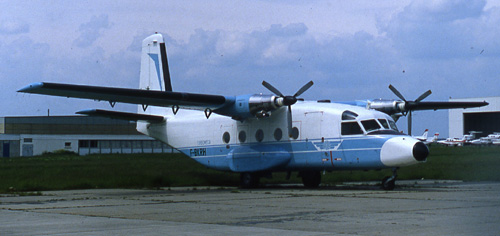 |
The Nord 260 Super Broussard is a turboprop
engined development of the single radial engined Max Holste 250. Its
two 985shp Turbomeca Bastan turboprops give it a cruising speed of
240mph and range of 940 miles. It seats 23 plus 2 crew. First flown
in July 1960, only nine were built; but it was used as the basis for
the much more successful Nord 262. It is 59 feet 2 inches long, with
wing span of 71 feet 10 inches, and gross weight of 21,600lb.
Le Bourget, May 1983. |
|
Germany |
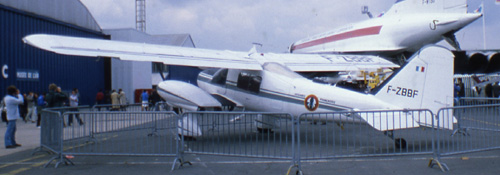 |
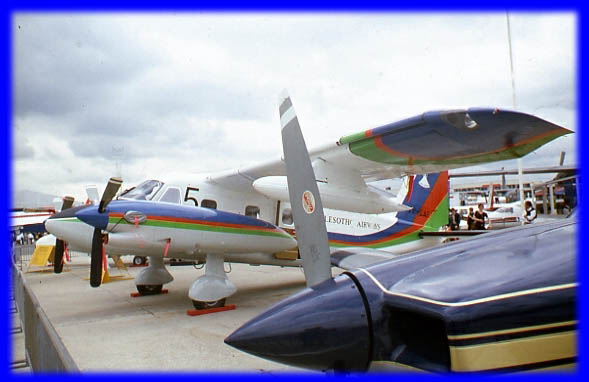 |
|
The Dornier Do128 is a
development of the Do28D Skyservant, itself a derivative of the
earlier Do28. All of them share the unique feature of having the two
engines on small stub wings and low mounted, leaving the main wing
uncluttered and more efficient. The main difference between the
early Do28 and the Skyservant range is the new, square fuselage
which raised the seating capacity from 7 to 10 people.
It has always been somewhat of a niche
aeroplane, though used in quantity by the German air force as a
light liaison aircraft. This one, of Lesotho Airways, was at
Paris-Le Bourget, in June 1981. The top
picture is an original Do28 operated by the French air force, at Le
Bourget in May 1983. |
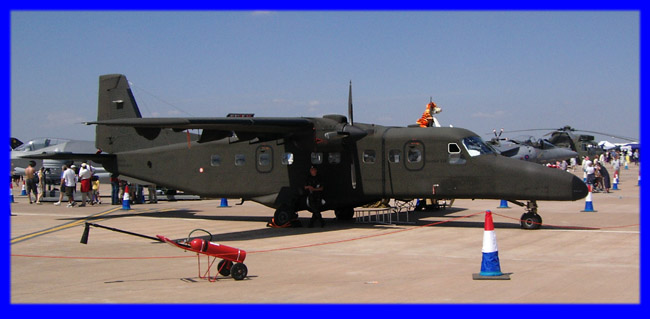 |
The Dornier Do228 is obliquely descended from
the Do128, but very substantially updated. Its two Garrett TPE331
turboprops (rated between 715 and 775 shp depending on version) give
it a cruising speed of 250mph and range of 1,200 miles. It seat 19
plus 2 crew. It first flew in March 1981. Its major technical
selling point at the time was the advanced wing. It is between 49
feet 3 inches and 54 feet 4 inches long (depending on the version),
with a wing span of 55 feet 7 inches. Around 230 were built before
Fairchild, who had meanwhile taken over Dornier, went bankrupt
thanks to the huge development costs of a planned larger regional
jet.
This one was at Fairford in July 2005. |
| Israel |
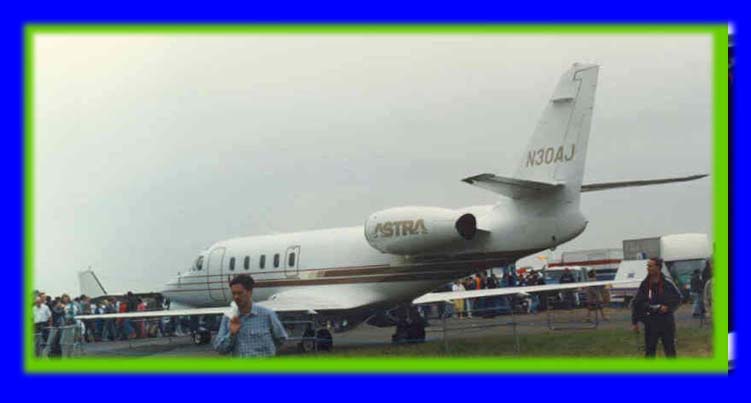 |
|
The IAI Astra is a development by Israel
Aircraft Industries of its successful Westwind business jet, which
in turn was acquired from the American Aero Design company with
which it was known as the Jet Commander. With a range of 3,500
miles, cruising speed of 540mph and seating for up to nine people
plus crew, this is a high performance machine. It is still in
production alongside the larger, intercontinental range Galaxy.
This Astra was at Farnborough in 1986. |





|